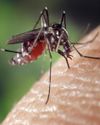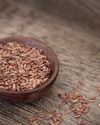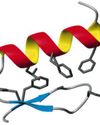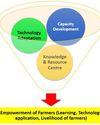The beetroot is the taproot portion of a plant named beet plant. It is not chiefly cultivated in India, it's a crop of Europe but grown at small scale in some areas of India.

When we consider the total sugar production in world , 35% of the sugar is produced from sugar beet and the contribution of India in its production is approximately zero because the climatic condition of India is not favorable for sugar beet, so its basically crop of European countries. Beetroot's medicinal properties are well known. It is rich source of iron and it has great quality of healing. It was first cultivated by the Romans. In19th century it became a famous vegetable because is discovered that sugar can be extacted from it. Now a days America is at top most position in production of beet root then Russia, France, Poland and Germany comes in this chain. In European countries many of the dishes are made up by beet root t, the soup of beet is known as “Borscht”. Beet root is widely use in making menus more attractive. Apart from being delicious and attractive its medicinal value can not be ignored. Because it belongs to the same family as spinach and chard, its leaves and root can be eaten. Beet root leaves have a harsh taste but the round root is sugary taste. Generally beet root has purple color, but also found in white and golden color. It has high sugar percentage, it is pleasant eaten raw but basically it cooked or pickled. Beetroot is of extremely dietary value; particularly the leaves are rich in calcium, iron and vitamins A and vitamin C. Beetroots are rich source of folic acid, iron and fair source of fibre, manganese and potassium. The leaves should not be thrown; they can be cooked as spinach. Beetroots are used for medicinal purposes, mainly for diseases related to liver because they helpful in stimulating the detoxification function of the liver.
This story is from the {{IssueName}} edition of {{MagazineName}}.
Start your 7-day Magzter GOLD free trial to access thousands of curated premium stories, and 9,000+ magazines and newspapers.
Already a subscriber ? Sign In
This story is from the {{IssueName}} edition of {{MagazineName}}.
Start your 7-day Magzter GOLD free trial to access thousands of curated premium stories, and 9,000+ magazines and newspapers.
Already a subscriber? Sign In

An insight into Chandipura virus in India
Recently lot of news regarding disease due to Chandipura virus has emerged in various newspapers/magazines. After reading the reports published it seems that thing is still brewing in the natures nest and it could affect mankind.

Why elephants never forget?
An elephant has a very large brain for its size and the 'temporal lobe' region responsible for memory is more developed with a greater number of folds - this results in powerful abilities to 'download' important survival data such as where to find food and water, and who is friend or foe.

Use of Algae for Wastewater Treatment Containing Heavy Metals
Wastewater treatment is a critical environmental issue particularly when it comes to the removal of heavy metals.

Nano priming Seeds: A Small Innovation Sparkling Big Advances in Germination
Nanopriming is an emerging agricultural technique where the seeds are treated with nanoparticles to improve their germination, growth, and overall performance.

Nobel Laureates in Physics 2024: Revolutionizing AlThe Physics Foundations Behind Machine Learning
This year's two Nobel Laureates in Physics have used tools from physics to develop methods that are the foundation of today's powerful machine learning.

Revolutionizing Biology: The 2024 Nobel Prize in Chemistry Celebrates Breakthroughs in Protein Design and Structure Prediction
The Nobel Prize in Chemistry 2024 is about proteins, life's ingenious chemical tools.

New findings on animal viruses with potential to infect humans
Scientists investigating animal viruses with potential to infect humans have identified a critical protein that could enable spillover of a family of organisms called arteriviruses.

Father-Daughter Team Decodes Mars' Alien Signal
There is no definitive answer to whether aliens exist, but there is a lot of work being done to find out:

Krishi Vigyan Kendras: Working for Farmer's Welfare
Krishi Vigyan Kendras (Farm Science Centres) are the District level institution serving as an agriculture knowledge resource & capacity development centre which plays indispensable role in front line extension regarding agriculture system in scientific way.

Sixth generation Computer: The future computing technology
We are in a transition towards a digital world, where everything will be dealt with in digital format.